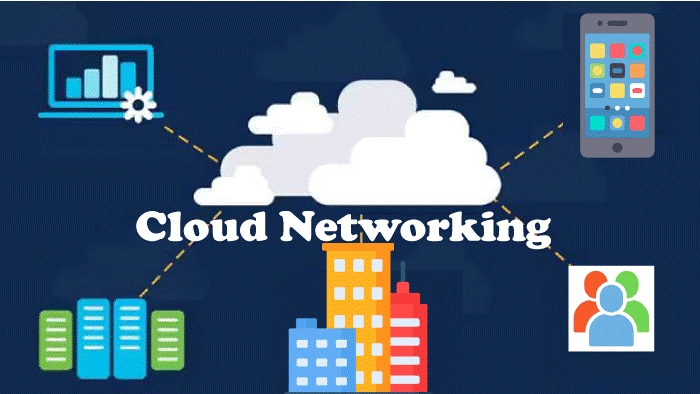
Enhancing Network Performance in Cloud-Native Environments
**Cloud-Native Networking: Optimizing Connectivity for Distributed Systems**
In the realm of cloud-native computing, where applications are decomposed into microservices and deployed across multiple cloud environments, network connectivity plays a pivotal role in ensuring optimal performance and reliability. Cloud-native networking solutions have emerged to address the unique challenges posed by this distributed architecture.
Traditional networking approaches, designed for monolithic applications, fall short in cloud-native environments. They lack the flexibility, scalability, and automation required to support the dynamic nature of microservices. Cloud-native networking solutions, on the other hand, are purpose-built to handle the complexities of distributed systems.
One key aspect of cloud-native networking is service discovery. In a distributed environment, it is crucial to be able to locate and connect to services dynamically. Service discovery mechanisms, such as Kubernetes’ Service and Endpoint objects, provide a way to abstract the underlying network infrastructure and enable services to communicate seamlessly.
Another important consideration is load balancing. With microservices, traffic can fluctuate rapidly, and it is essential to distribute the load evenly across multiple instances of a service. Cloud-native load balancers, such as Envoy or Istio, provide advanced load balancing algorithms that can handle high traffic volumes and ensure service availability.
Furthermore, cloud-native networking solutions offer enhanced security features. They enable the implementation of fine-grained access control, encryption, and authentication mechanisms to protect sensitive data and prevent unauthorized access. This is particularly important in cloud environments, where multiple tenants share the same infrastructure.
Additionally, cloud-native networking solutions provide observability and monitoring capabilities. They allow administrators to gain insights into network traffic patterns, identify performance bottlenecks, and troubleshoot issues proactively. This enables them to optimize network performance and ensure the smooth operation of distributed systems.
In conclusion, cloud-native networking solutions are essential for optimizing connectivity in distributed systems. They provide service discovery, load balancing, security, and observability features that are tailored to the unique challenges of cloud-native environments. By embracing cloud-native networking, organizations can improve the performance, reliability, and security of their distributed applications, enabling them to fully leverage the benefits of cloud computing.
Implementing Service Mesh for Efficient Inter-Service Communication
**Cloud-Native Networking: Optimizing Connectivity for Distributed Systems**
In the realm of cloud-native architectures, efficient inter-service communication is paramount for ensuring the seamless operation of distributed systems. Cloud-native networking provides a comprehensive approach to optimizing connectivity, enabling applications to communicate effectively across multiple services and environments.
One key component of cloud-native networking is service mesh. A service mesh is a dedicated infrastructure layer that manages and secures communication between microservices. It provides a range of capabilities, including service discovery, load balancing, and traffic management.
Service discovery allows services to locate each other dynamically, regardless of their physical location or network topology. This simplifies the process of connecting services and ensures that they can communicate seamlessly. Load balancing distributes traffic across multiple instances of a service, improving performance and availability.
Traffic management enables fine-grained control over the flow of traffic within the service mesh. It allows administrators to define routing rules, implement rate limiting, and enforce security policies. This ensures that traffic is directed efficiently and securely to the appropriate services.
Implementing a service mesh offers numerous benefits for distributed systems. It reduces the complexity of managing inter-service communication, improves application performance and reliability, and enhances security. By abstracting the underlying network infrastructure, service mesh enables developers to focus on building and deploying applications without worrying about the intricacies of network connectivity.
To implement a service mesh, organizations can choose from a variety of open-source and commercial solutions. Some popular options include Istio, Linkerd, and Consul. The choice of solution depends on the specific requirements of the organization, such as the size and complexity of the distributed system, the desired level of control, and the available resources.
Once implemented, a service mesh provides a centralized platform for managing and monitoring inter-service communication. It offers real-time visibility into traffic patterns, service health, and security events. This enables administrators to identify and resolve issues quickly, ensuring the smooth operation of the distributed system.
In conclusion, cloud-native networking, with its emphasis on service mesh, provides a powerful approach to optimizing connectivity for distributed systems. By simplifying service discovery, load balancing, and traffic management, service mesh reduces complexity, improves performance, and enhances security. As organizations embrace cloud-native architectures, implementing a service mesh becomes increasingly essential for ensuring the efficient and reliable operation of their distributed systems.
Automating Network Management for Scalability and Agility
**Cloud-Native Networking: Optimizing Connectivity for Distributed Systems**
In the era of cloud computing, distributed systems have become ubiquitous. These systems, composed of multiple interconnected components, demand robust and scalable networking solutions to ensure seamless communication and optimal performance. Cloud-native networking has emerged as a paradigm shift, offering a modern approach to network management that aligns with the principles of cloud computing.
Cloud-native networking leverages containerization, microservices, and software-defined networking (SDN) to provide a flexible and agile networking infrastructure. By embracing these technologies, organizations can automate network management, enhance scalability, and improve the overall efficiency of their distributed systems.
Containerization, a key aspect of cloud-native networking, allows applications to be packaged into lightweight, portable containers. This enables rapid deployment and scaling of applications, as containers can be easily moved across different cloud environments. Microservices, another fundamental concept, decomposes applications into smaller, independent services that communicate via well-defined interfaces. This modular approach promotes flexibility and simplifies network management.
SDN plays a pivotal role in cloud-native networking by decoupling the control plane from the data plane. This separation allows for centralized network management and programmability, enabling administrators to automate network configurations and respond dynamically to changing application requirements.
One of the primary benefits of cloud-native networking is its ability to automate network management. By leveraging SDN and orchestration tools, organizations can automate tasks such as network provisioning, configuration, and monitoring. This automation reduces manual intervention, minimizes errors, and frees up IT resources for more strategic initiatives.
Furthermore, cloud-native networking enhances scalability by enabling elastic network resources. As applications scale up or down, the network can automatically adjust to meet the changing demands. This ensures that applications have the necessary bandwidth and connectivity to perform optimally.
In addition to automation and scalability, cloud-native networking improves agility by providing a consistent networking experience across different cloud environments. This allows organizations to seamlessly migrate applications between clouds without disrupting network connectivity.
In conclusion, cloud-native networking is a transformative approach to network management for distributed systems. By embracing containerization, microservices, and SDN, organizations can automate network management, enhance scalability, and improve the overall agility of their cloud-based applications. As distributed systems continue to proliferate, cloud-native networking will play an increasingly critical role in ensuring their seamless operation and optimal performance.







